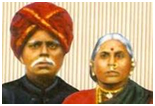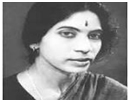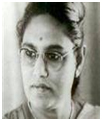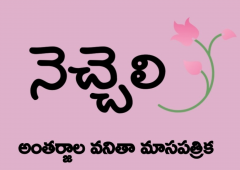
Breaking the Mould: Women’s Voices and Visions in Literature-4
(A Brief study of Indian women writers, contributed for the upliftment of women from social norms)
-Padmavathi Neelamraju
“I’ve realized that the meaning of success for a woman does not lie in her relationship with a man. Only after that realization, did I find this man’s companion-ship.” ( Quote from ‘liberation of Sita’ by Volga)
Western feminism and literary trends significantly influenced Indian women writers in English, inspiring them to explore themes of female identity, empower-ment, and challenging patriarchal structures, as seen in the works of writers in Indian vernaculars. The women’s liberation movement in west had a great impact on Indian women intellectuals, impacted profoundly on broader social and cultural movements, serving as catalysts for change and inspiring generations of activists. The influences are so strong that enabled women writers question the deeply rooted traditional norms of Indian society and the social restrictions imposed on women. Unfortunately, the work of Indian women writers has been undervalued due to patriarchal assumptions about the superior worth of male experience. One factor contributing to this prejudice is the fact that most of these women writers were kept within the orbit of domestic space, and women’s perceptions of their experience confined within to it. If we observe the life of women supporting their husbands in this regard was evidential; the prevailing social conditions of women during Veeresalingam’s period were prominent from the story of his wife.
 |
Rajyalakshmamma:
“In a way, she [Rajyalakshmamma] bore greater burden than he [Veeresalingam]. It was easy for him to offer protection to every child widow that had come to him seeking help. But it was Rajyalakshmamma who had to feed them, clothe them, and take care of them like a mother. …women from different areas, with different backgrounds and personalities. … And she had to deal with several child widows with several heartrending stories. …” |
During the same period of Veeresalingam, young widows like Battula Kamakshamma &, Nalam Suseelamma, who were teenage children in fact, throw light on the social change and their advanced perceptions on woman’s life. Battula Kamakshamma (1886- ), a teenage widow at this time gave us a touching account in her autobiographical essay, smruthulu, anubhavamulu [memories and personal experiences] of how women lived with grace under trying social conditions. These women boldly accepted the ideology of veeresalingam garu to some extent only which was found relevant to them. Nalam Suseelamma stepped ahead saying “there was nothing to be ashamed of, she was only sorry but not ashamed. …”
 |
“I could not step outside past the front door in those days. Now I am running this Andhra Mahila gaana sabha [Andhra women music society]. I owe it to the incessant teachings of Veeresalingam garu. ….”. Kamakshamma and Suseelamma reaffirm the evolutionary nature of social values. These writers showed their courage in mending the social norms by not offending its sensibilities. |
Pulugurta Lakshmi Narasamamba was also an active contributor to Gruhalakshmi, editor of Savitri in 1904. Although she might have challenged Veeresalingam’s reforms like widow remarriage, she strongly advocated women’s education.” (reference from Lakshmana Reddi. Telugulo patrika racana.) Even then educated women, in the sense to have schooling or proper learning, did not have school going learning. Yet a good number of writings in the then popular magzines had been published by the women writers in pre independence period. .
“One classic example of their success was a scholarly work by Burra Kamaladevi (1908-), Chhandohamsi (A study of meter). The book was prescribed as a textbook for post-graduate students in Telugu Literature and bhashapraveena diploma (attestation of scholarship in Telugu language studies) in schools. The notable factor was that Kamaladevi received no formal education, and that the academy did not consider it an obstacle to consider it a scholarly work.”
 |
Muppaalla Ranganayakamma:
In continuation we could see Ranganayakamma (also known as Muppala Ranganayakamma; born 1939) an Indian Marxist writer and critic who was a whistle blower questioning the existing society and the interpreting Ramayana in Marxist perspective. |
The main theme in her works is gender equality and the depiction of women’s family life in India. She boldly emphasized that we should reject Ramayana because it supports rulers against the ‘ruled’, the rich against the poor, the upper castes against lower castes, the civilized non-tribal communities against primitive tribal communities, male chauvinism against women, father’s domination over sons, elder brother’s domination over younger brother and so on. Ranganayakamma observes that Ramayana is a symbol of feudal culture in India. When it is streamed in a magazine she faced a lot of objections from the critics and that series was stopped. Yet Ranganayakamma brought out her ideology by publishing it. There is a clear growth in the knowledge as well as in the personal life of Ranganayakamma from Pekamedalu to Janaki Vimukthi. The motto of her novels is to understand the predicaments of women in society to explore the status of man-woman relationships. Ranganayakamma suggests all women through her novels to live with self-respect without depending on men for their livelihood.
 |
 |
 |
 |
| Yeddanapudi Sulochana Rani | Vasireddi Seeta Devi | Madireddi Sulochana | Utukuri Lakshmikanthamma |
Later period telugu readers witnessed a tremendous change in the themes of women writers. Vasireddy Seethadevi, yeddanapudi sulochana rani, Madireddi sulochana Rani, utukuri lakshmi kanthamma etc., had moved the social norms by creating a n arrogant, strong and beatiful women protagonist in their novels, and left an impresion in evry young women of that period to be like theirprotagonists. VasireddiSitadevi’s novel Mareechika was banned by the state government for her shrued remarks on the then ruling party. She waged a war against the government in the court, and got her book released. Mattimanishi (Son of Mother Earth) is one of her best novels and it was translated into fourteen Indian and foreign languages.Popuri Lalita Kumari, popularly known by her pen name Volga, is a poet and writer well known for her feminist perspective.Volga traces Sita’s path to self-realization through the stories of all the remarkable the mythical women women, highlighting their role being radical, going against the patriarchy to keep up their self esteem. She explores each women’s personal experiences, e.g. being a beautiful woman, objectified for the sexual desires of men like Ahalya–questioning the institutions of patriarchy such as; marriage, religion, caste by the means of Renuka’s experience and the power of self-authority owing to Urmila’s conversation with Sita.
Contemporary writers from North India portrayed women as victims to the many patriarchal norms; men being the dominant ideology of patriarchy. The novel “Fasting, feasting” by Anita Desai examines various women victims of the oppressive society controlled by men. Anita Desai’s novel highlights the different ways each individual deals with oppression. It is natural for an intellectual and litterateur like Shashi Deshpande to react against the oppression and injustice inherent in our social, politicaland economic system where incompatiblemarriage, child marriage, divorce, rapes are common and still require satisfactory solutions. She ardently dealt with the socio economic condition of Indian family which lead to women to struggle for her identities as an individual human being besides preserving her own seat as a daughter, sister, wife and mother.
Under these influences, the Indian women writers in later 20th’s half century, bravely stepped forward to break the literary and social norms of the past through their writings. During this period the fiction writing had been liked as genre, to delve deep to tackle the psychological perspective of female protagonists of their stories. They broke the conceptual cliché of imposed morality on women. The more recent women may not be as prolific as their predecessors yet they also deal with themes related to women and society or more specifically the man-women relationship in their novels. Arundhati Roy in The God of Small Things visualizes the whole cultural scenario from a locus of isolation, oppression, depression, frustration and amalgamation. The novelist infers that human identity is destroyed by the oppressive forces of society. Roy presents three generations of doubly marginalised women. The new generation of Indian women novelist namely, Gita Hariharan, Namita Gokhale, Anita Nair and Manju Kapur etc., have invited much critical attention.
“Until women get over handicaps imposed on them by the society, outside and inner conditioning, the human race will not have realized its full potential.” Thus pondering on women’s liberation does not bring change, it should transform the lives by all means.
*****
(Next, to be continued with some more contemporary women writers of the West from the same period. See you again!)

Padmavathi Neelamraju is a retired teacher with more than 35 years of experience in teaching English, based in Chandigarh. She completed her education at Nagarjuna University, AP and CIEFL, Hyderabad, and went on to receive an MPhil in Indian Writings in English with a focus on Feminist literature. With an interest in Telugu and English literature, she pens her experiences through blogs and newspapers. Her writings often reflect her enthusiastic and experiential outlook towards life and society. She actively volunteers for the cause of education.

Excellent Padmagaru